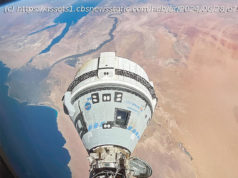We look at some of the science (and magic) regarding the massive mission that will take place across the globe
Flying reindeer, elves and Santa Claus might seem a little far-fetched to some, so today we look at some of the science (and magic) regarding the massive mission that will take place across the globe.
Let’s assume Santa distributes gifts from 5 p.m. to midnight, or for seven hours. Due to the Earth’s rotation, there is an overall time difference of 24 hours between different time zones, so we can therefore say that Santa has about 31 hours to finish his work (if he logically travels east to west).
A book of the Super Santa: The Science of Christmas: A Christmas Holiday Book for Kids is at the Massachusetts Institute of Technology book store is here.
Here’s look at some of the numbers a scientist at Massachusetts Institute of Technology broke down:
No known species of reindeer can fly. But there are 300,000 species of living organisms yet to be classified, and while most of these are insects and germs, this does not completely rule out flying reindeer, which only Santa has seen.
There are about 1.9 billion children (persons under 18) in the world. But since Santa doesn’t deliver to all children, that reduces the workload to 15% of the total — 378 million according to the Population Reference Bureau. At the average census rate of 3.5 children per household, that’s 91.8 million homes. One presumes there’s at least one good child in each.
Visiting 91.8 million homes in 31 hours works out to 822.6 visits per second. This is to say that for each household with good children, Santa has 1/1000th of a second to park, hop out of the sleigh, jump down the chimney, fill the stockings, distribute the remaining presents under the tree, eat whatever snacks have been left, get back up the chimney, get back into the sleigh and move on to the next house. Assuming that each of these 91.8 million stops are evenly distributed around the earth (which, of course, we know to be false but for the purposes of our calculations we will accept), we are now talking about 0.78 miles per household, a total trip of 75 1/2 million miles, not counting stops to do what most of us must do at least once every 31 hours, plus feeding, etc.
This means that Santa’s sleigh is moving at 650 miles per second, 3,000 times the speed of sound. For purposes of comparison, the fastest human-made vehicle on earth, the Ulysses space probe, moves at 27.






